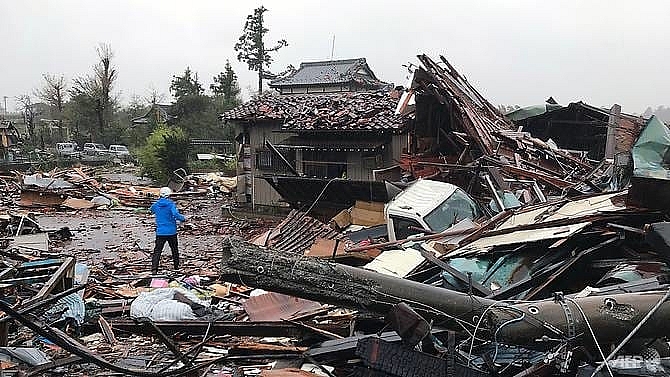Japan’s deadly Typhoon Hagibis leaves trail of destruction

The storm made landfall just before 7 p.m. Saturday local time on the Izu Peninsula, southwest of Tokyo. According to the Japanese Prime Minister Shinzo Abe’s office, “record-setting heavy rains and windstorms have caused flooding and landslides.” More than 230,000 people were evacuated ahead of the storm, with emergency orders issued for many cities around the greater Tokyo area. Around 27,000 Self-Defense Forces personnel are taking on rescue operations, the Prime Minister’s office said. Along with the 31 deaths, NHK said at least 186 people had been injured and 14 people remain missing.Abe offered his “condolences for the people killed in the disaster and my sincere sympathy for the people affected by this disaster.” “Now not only police, fire department and coast guard, but also 27,000 staff of the self-defense force are on rescue, search for missing and supporting evacuation,” Abe said Sunday. “We are to enhance the scale of operation depending on necessity.”Typhoon Hagibis came as the country hosts the Rugby World Cup. Two matches — England-France and New Zealand-Italy — had to be preemptively canceled. Sunday’s Pool B match between Namibia and Canada in Kamaishi was also canceled hours before it was due to take place.A pivotal Pool A match between Japan and Scotland did go ahead with the host nation going on to secure a place in the quarterfinals. Formula One events scheduled for Sunday also went ahead as planned.While authorities made it clear that the decision to cancel games was necessary to ensure the safety of players and fans, many were critical of the tournament’s inability to reschedule games and apparent unpreparedness for the extreme weather — despite the World Cup being held during typhoon season. In canceled games, two points are awarded to each team in line with tournament rules. This impact who qualifies for the next round of the competition.Evacuation advisories affect tens of millionsEvacuation advisories had been issued throughout much of the Tokyo region as the typhoon approached Japan’s main Honshu island, affecting tens of millions of people. The Japanese capital was locked down on Saturday, with usually busy streets abandoned amid torrential rain.There were widespread transport disruptions Saturday, with flights, bullet trains and other transport canceled across Honshu. Tokyo’s Haneda and Narita airports were back in operation midday Sunday, but many flights remained canceled. Flag carrier Japan Airlines said it had canceled 278 domestic flights — affecting 48,340 people — and 66 international flights, affecting 11,790. ANA canceled 297 domestic flights — affecting 52,500 people — and 84 international flights, affecting 13,300.High-speed and regular trains headed south of Tokyo were largely back in service Sunday, with trains to the north due to resume service in the early evening. However as many as 212,500 households in storm-affected areas remained without power on Sunday afternoon, power companies said.CNN’s Claudia Dominguez contributed to this report.




